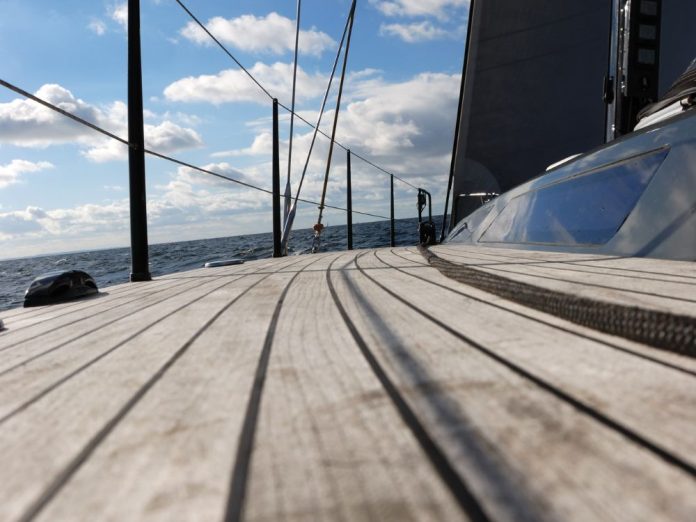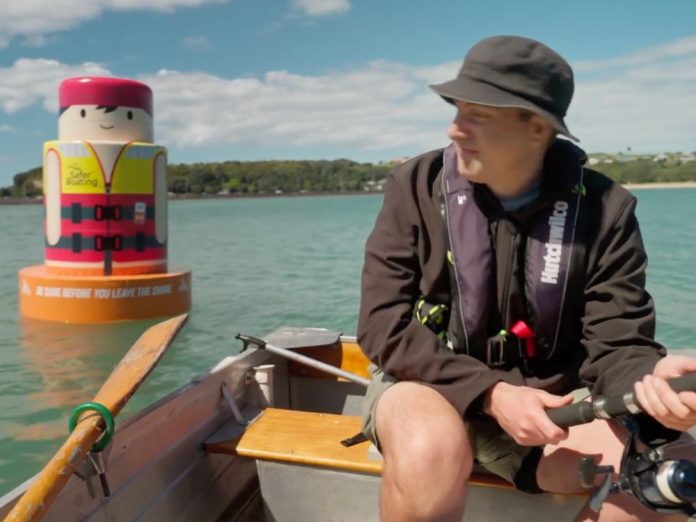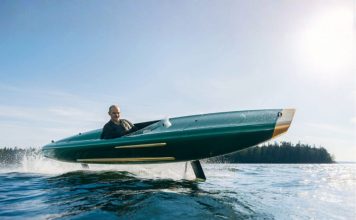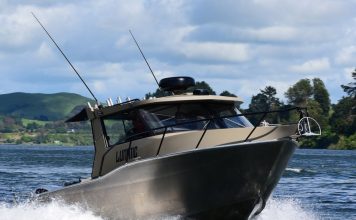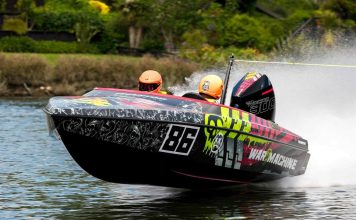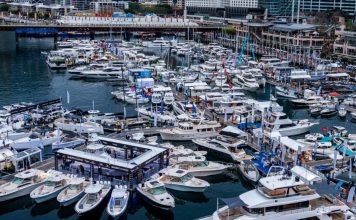An anchor locker is a dedicated storage compartment, typically located in the bow of a boat, designed to securely house the anchor and its associated gear. Its primary purpose is to keep the anchor, chain, and rope (rode) neatly stowed yet ready for rapid deployment.
Construction varies by vessel size and type but is usually moulded into the hull or deck structure for strength and watertight integrity. Most lockers are self-draining, with scuppers or limber holes allowing water to escape, preventing standing water that could damage gear. The interior may be lined or reinforced to handle the abrasion from chain links and anchor shanks.
Layouts range from simple open wells to partitioned spaces with cleats, rollers, or brackets to keep gear organised. Inside, you can expect to find the anchor itself, the anchor rode (a combination of rope and chain), shackles or swivels, and sometimes a windlass motor if the vessel has powered anchoring. On well-equipped boats, there may also be a fresh or saltwater washdown hose for cleaning the anchor as it’s retrieved.
A clean anchor locker keeps the foredeck tidy, improves safety by reducing trip hazards, and ensures anchoring gear is secure yet instantly accessible when needed.
Why clean your anchor locker
Many anchor locker problems stem from neglect rather than design. Without regular attention, mud, sand, and marine growth left on the anchor and chain can create foul smells and slimy buildup. Saltwater sitting in the locker accelerates corrosion, especially if the drain holes are clogged. Poorly flaked rope and twisted chain lead to tangles and jams, often right when you need the anchor most. If the rode piles up unevenly, you might have to reach in and rearrange it by hand, which is messy and sometimes hazardous. Keeping the locker clean, rinsed, and well-drained not only prevents odours but also ensures smooth, trouble-free anchoring.
A troll through social media highlights stories of boats with issues related to dirty, messy sail lockers. A while back Yachting Monthly ran a crash-test scenario; on post-incident it was found that the anchor chain had escaped the confines of the anchor locker and spilled across the foredeck wreaking havoc above and below decks. Though the boat was only used for testing, the event starkly demonstrates how an improperly secured anchor or poorly maintained anchor locker can turn into a safety hazard — especially when heavy gear shifts unexpectedly in rough conditions.
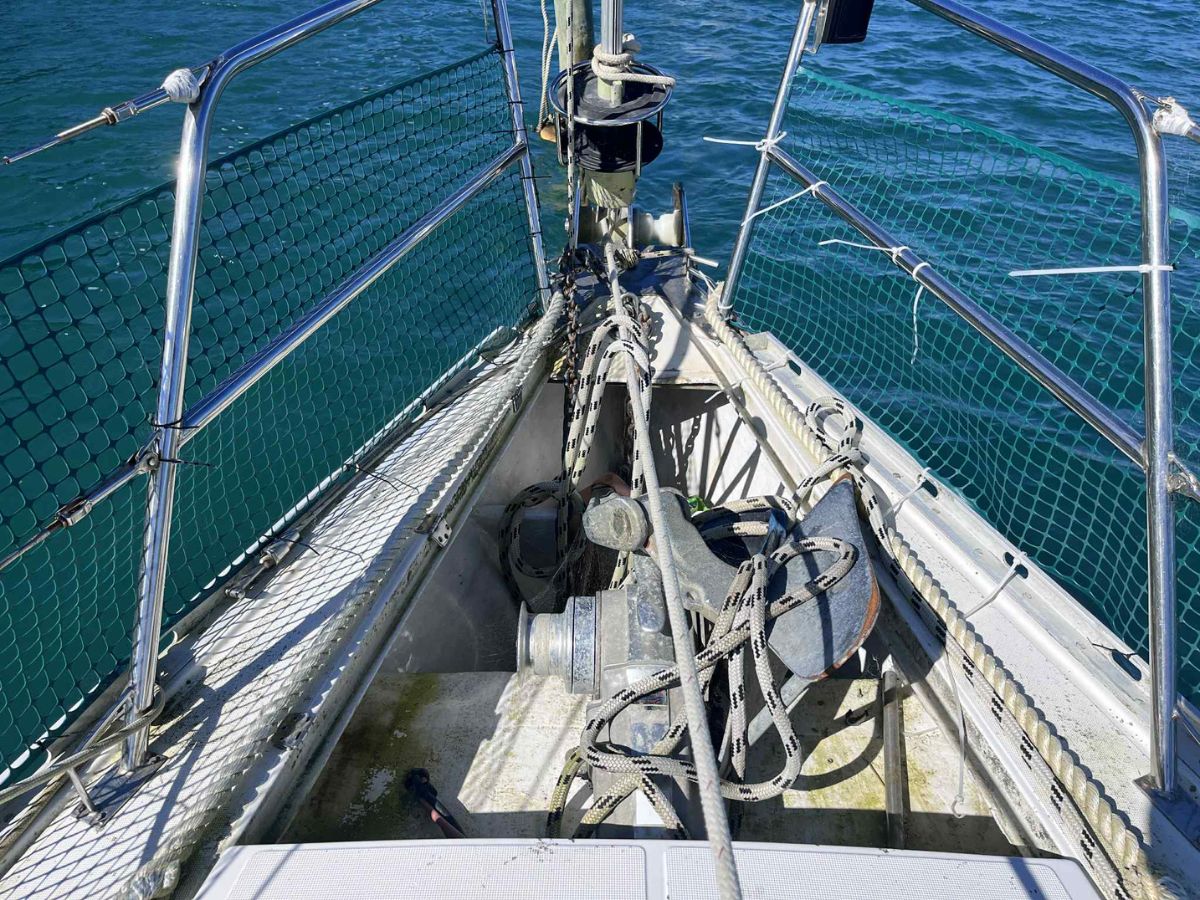
A tidy locker keeps your boat safe and stress free. A clean, dry anchor locker helps the chain run sweetly and makes stowage predictable in a blow.
How to clean your anchor locker
You will need to remove the chain from your chain locker to give it a proper clean. First, secure the anchor, then disconnect the chain from it. Open the locker and pull the chain out by hand or with assistance, flaking it neatly on deck or on the dock. This allows full access to clean, inspect, and service both the locker and chain.
Gear up and empty out
Lay a tarpaulin (tarp) on the deck before you start to protect your deck from dirt and rust, then lay the chain and warp on the tarp. We suggest the use of nitrile gloves and eye protection. Burnsco’s heavy-duty nitrile gloves do the job well.
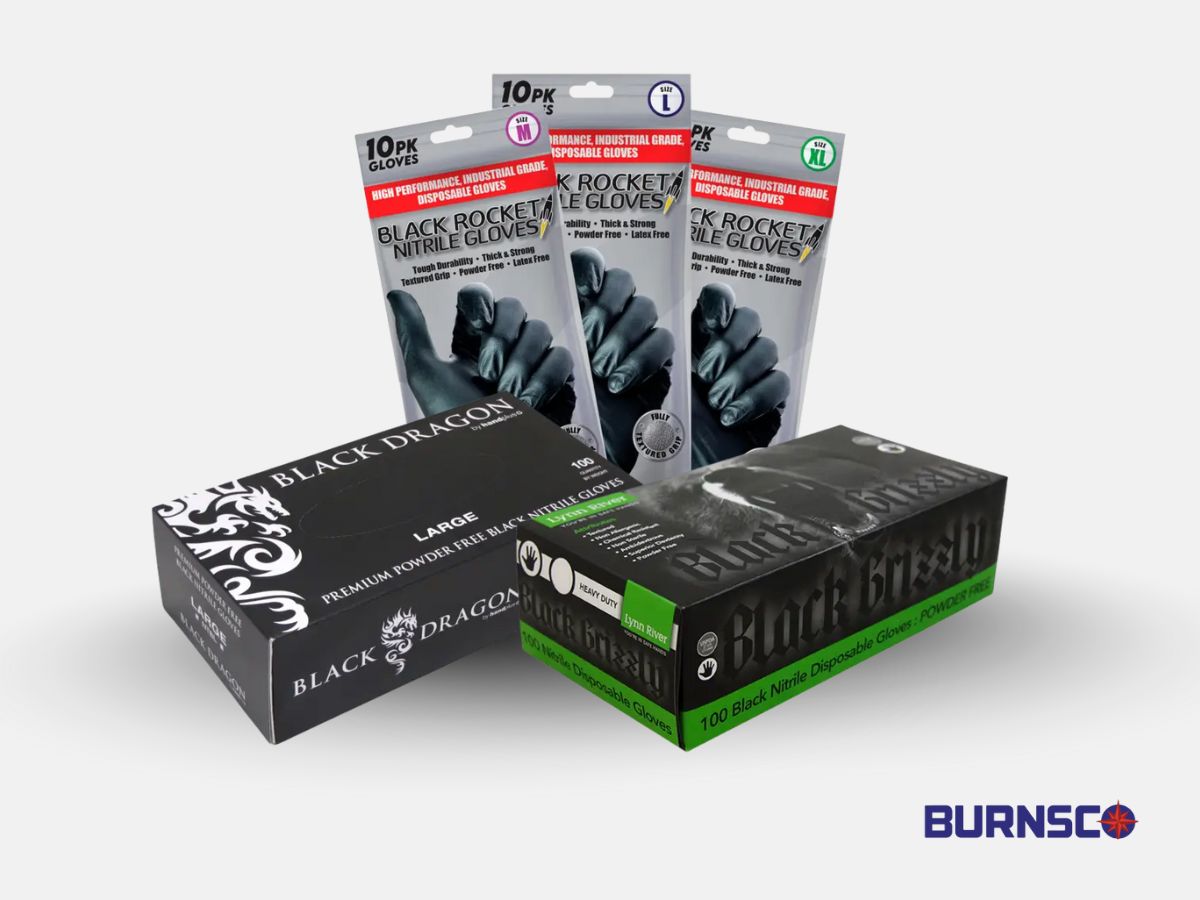
Flush, scrub, degrease
Rinse the locker with fresh water. Use a soft deck brush and a marine cleaner to lift slime and salt. A simple combo is a soft deck brush and a multipurpose cleaner or degreaser. Keep the wash water out of the bilge.
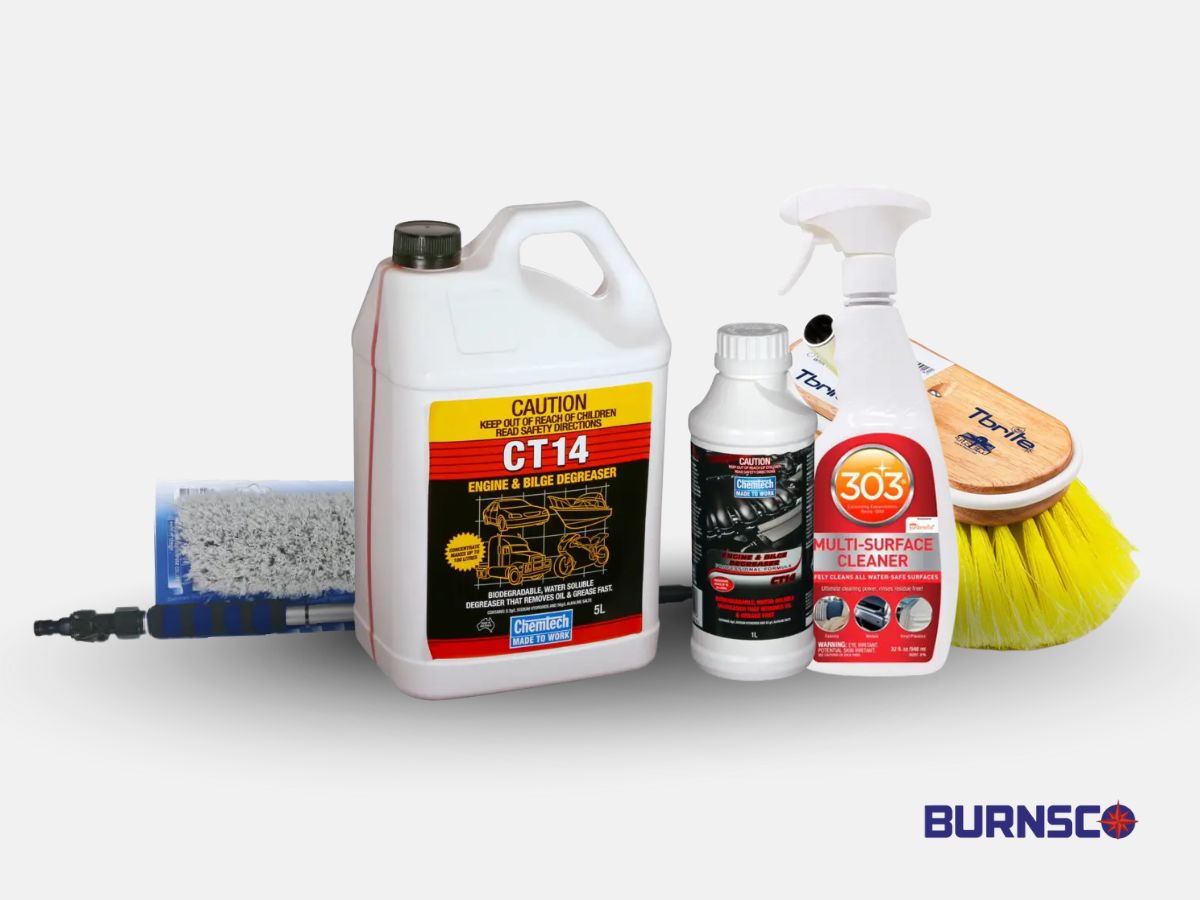
Check drains and fittings
Clear limber holes. Confirm any drain hoses are sound and clamped. If you often anchor in sticky mud, consider a washdown kit to blast the chain clean before it piles in the locker. Jabsco and Seaflo kits are popular options.
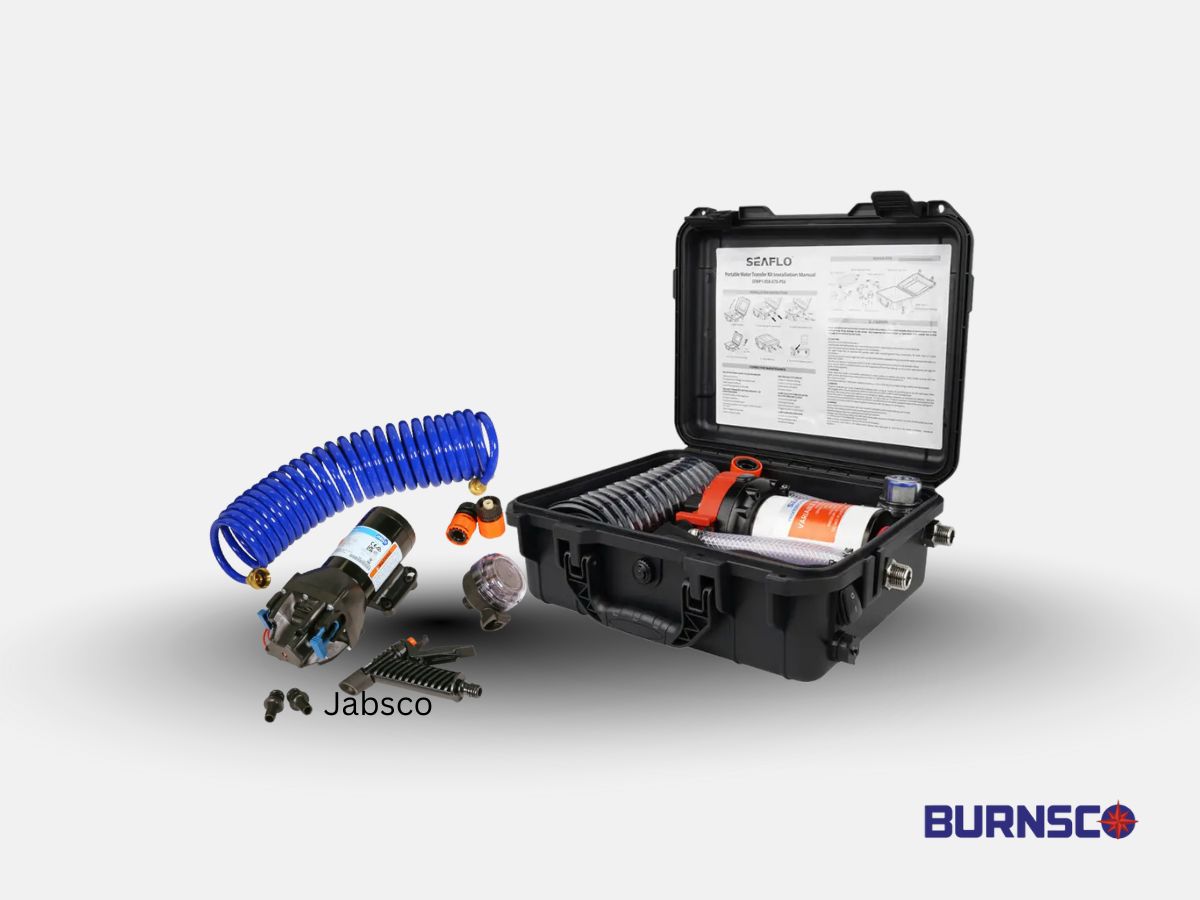
Inspect the chain
Measure total length. Look for red rust, tight links, and worn galvanising. If the links are thinning or seized, replace them. DIN766 short-link chain mates with common Maxwell gypsies, which most Kiwi boats use. Burnsco carries DIN766 chain options in galvanised and stainless grades.
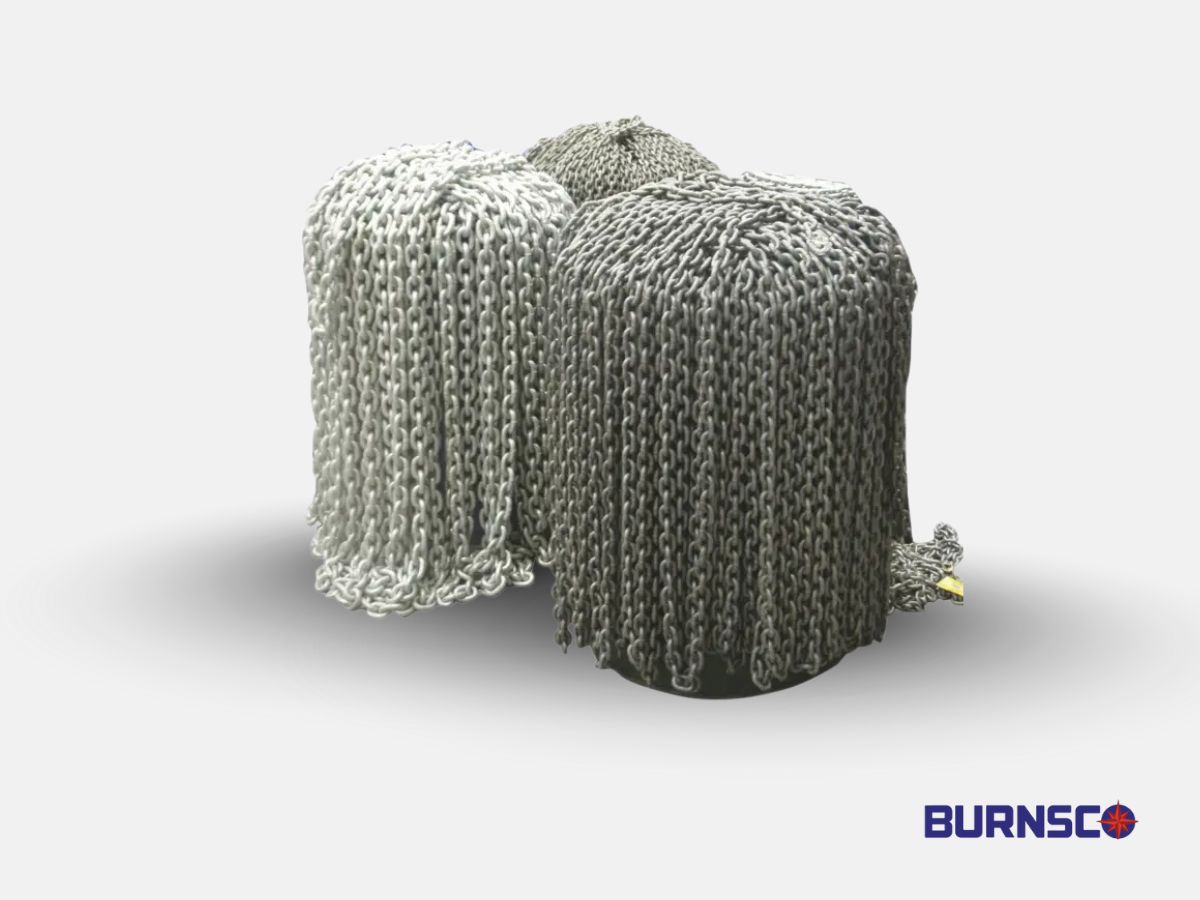
Inspect the warp
Run the rope through your hand. Feel for hard spots, cuts, and flattened sections. Re-splice or replace if in doubt. Bundle kits, which include rope, chain and shackles sized for small boats, are an easy refresh.
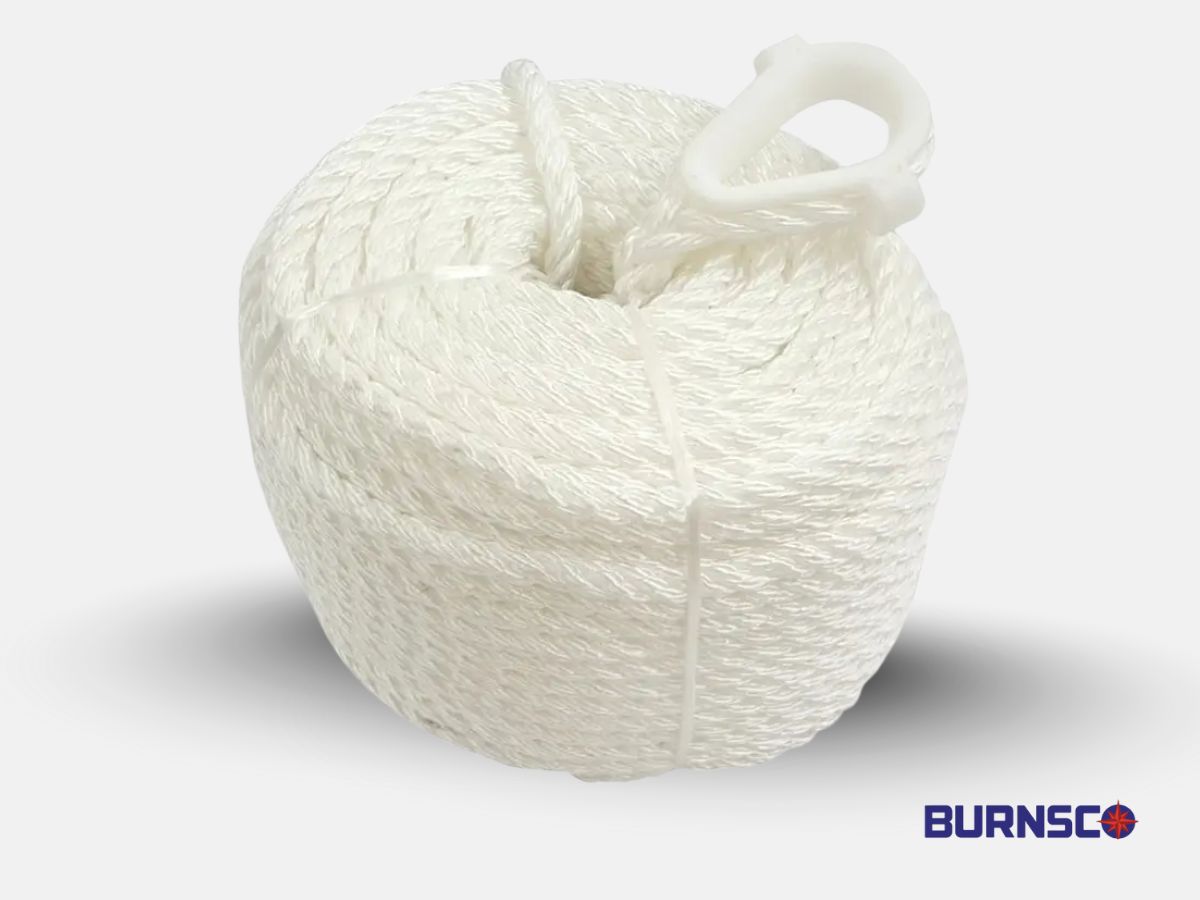
Shackles and swivels
Check for distortion and pitting. Replace any suspect parts. Fit the right size shackle pin for your chain. A self-righting swivel helps the anchor arrive in the bow roller the correct way round, which saves drama at the pulpit. Mouse shackle pins with wire or a cable tie.
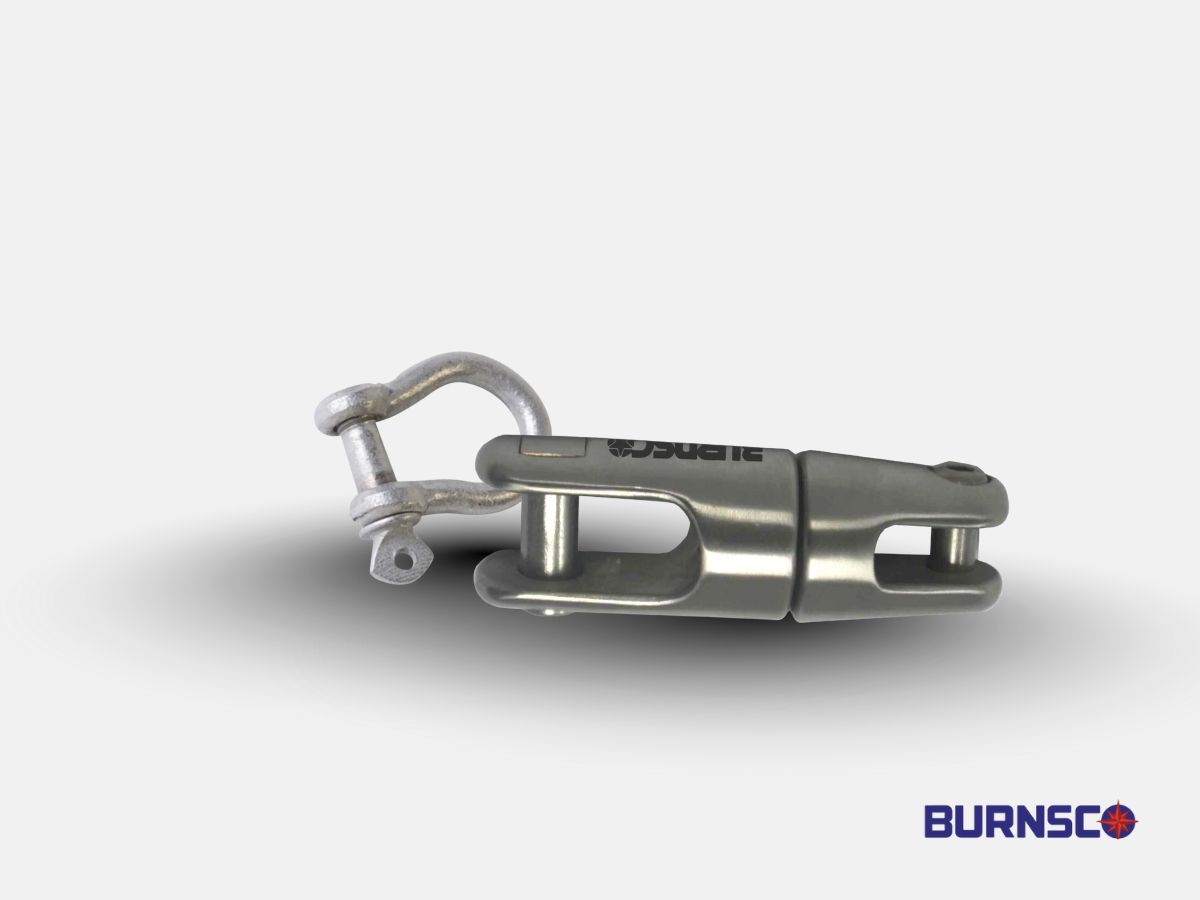
Dry and restow
Let the locker dry fully. Sprinkle a little biocide-safe deodoriser if smell is a problem. Coil warp below and flake chain on top, so the chain feeds first.
Re-mark your anchor chain
You cannot set accurate scope if you do not know how much is down. Take 10 minutes to re-mark your anchor chain while it is out.
- Pick a scheme you will remember. Many crews mark every five metres with colours, and 10m with twin colours.
- Use purpose-made plastic chain markers sized to your link. They are fast, neat, and windlass friendly. Keep spares on board.
- Add small paint dabs as a belt-and-braces backup if you like.
- Log your code on a label at the helm.
- Recheck after a few trips. Replace any missing markers.
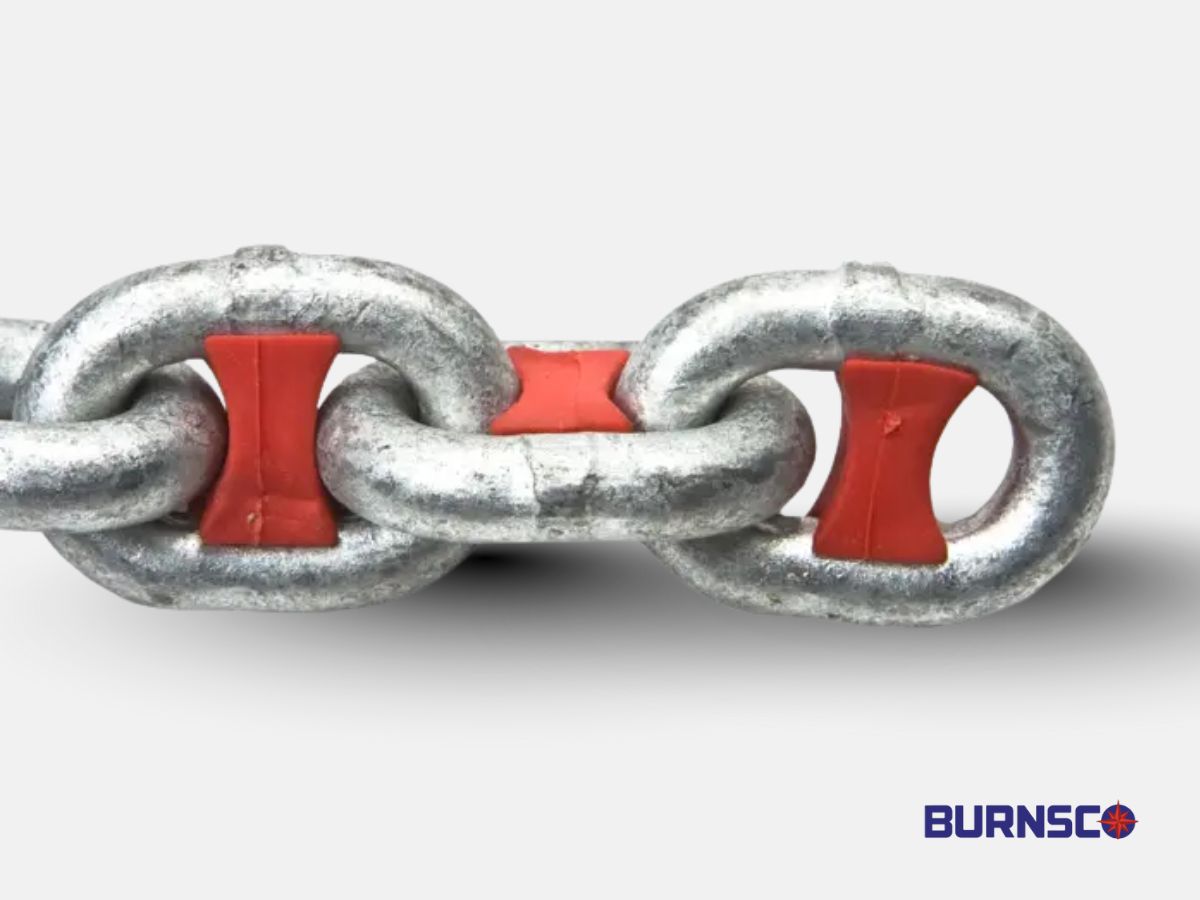
Choose the right anchor for your boat
We have plenty of choices in New Zealand. Match anchor design to your seabed, your boat’s windage, and your bow hardware.
Modern scoop anchors
Rocna Original and Manson Supreme set fast and hold hard in sand and mud. The Supreme’s sliding shackle can help free a stuck hook in rocky ground. Both suit windlass handling and are proven by Kiwi cruisers.
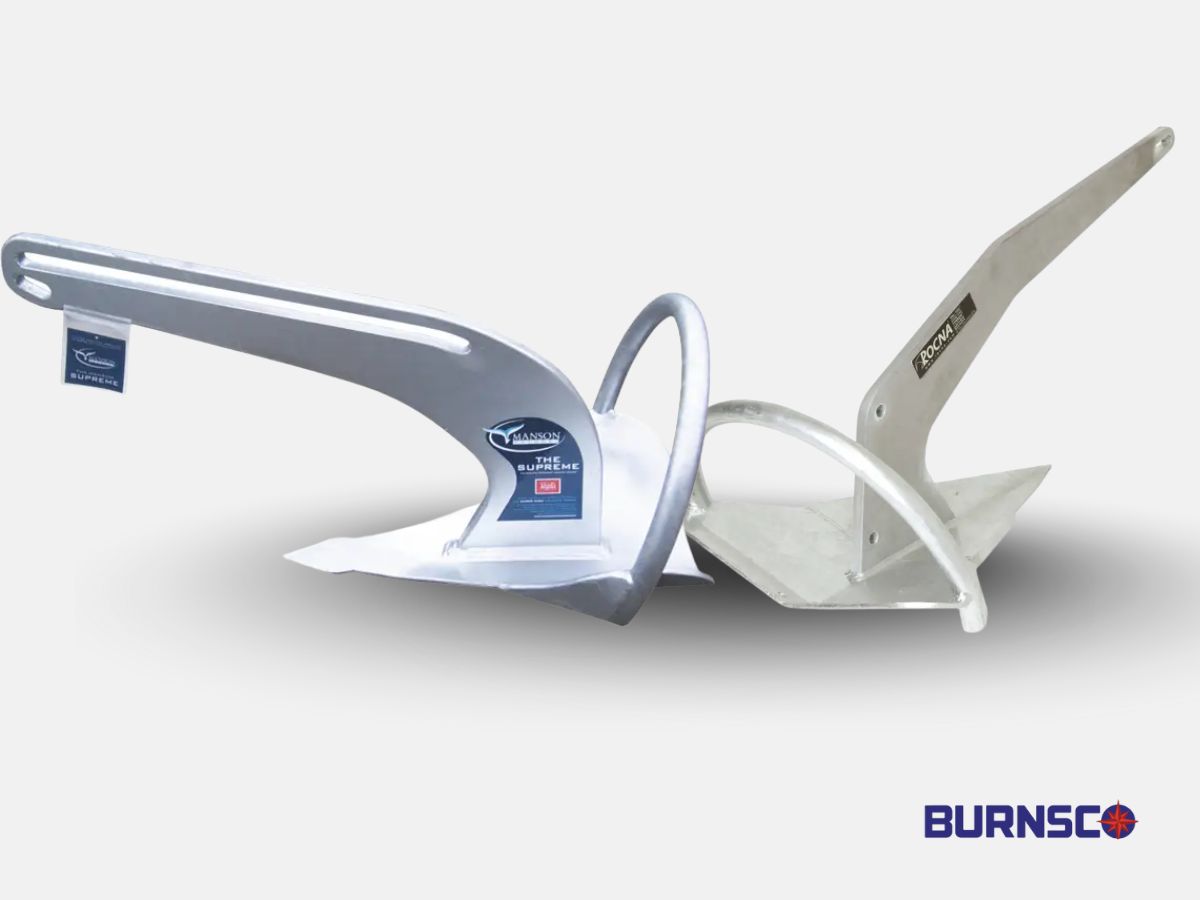
Plough and claw styles
Traditional ploughs like the Maxwell Maxset are versatile and fare well on soft bottoms. They self-right and work fine from a bowsprit or roller. Danforth fluke anchors are light and bite quickly in clean sand – good as a stern pick or day anchor.
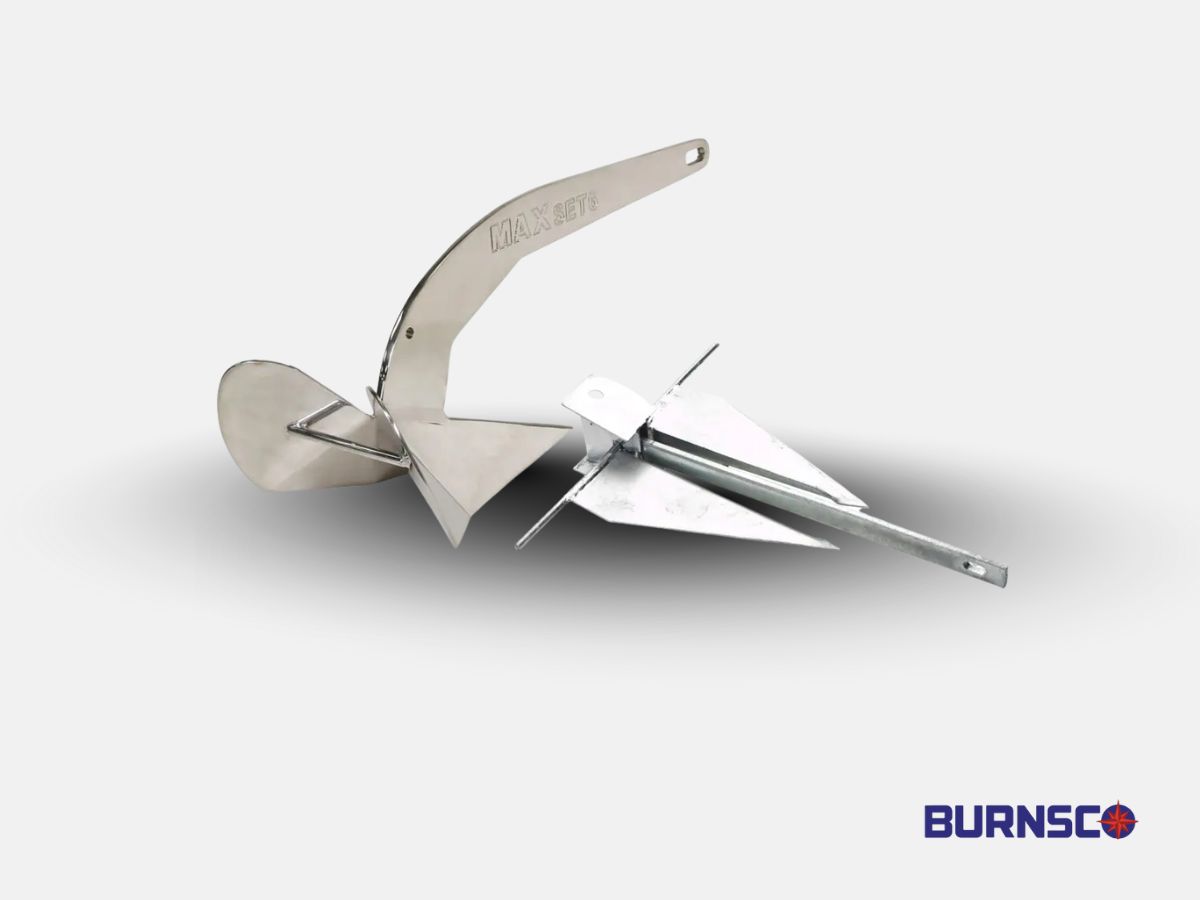
If you are unsure, start with Burnsco’s anchor range, then match size to boat length and displacement. Their guide explains the trade-offs clearly.
Quick links to shop the options
Rocna Original, Manson Supreme, Manson Plough, and Maxwell Maxset are all available through Burnsco’s anchor pages. Burnsco+3Burnsco+3Burnsco+3
Clean your anchor locker, then keep sea pests off your gear
Exotic caulerpa is the current worry in the Hauraki Gulf. There is now an anchoring ban around all of Hauturu Little Barrier Island, effective since July 3, 2025. Do not drop the pick anywhere near the island.
Anchoring ban around Little Barrier Island as biosecurity rules tighten
Elsewhere, controlled areas allow anchoring only if you check and clean your anchor and chain before moving to a new spot. Bag any seaweed and bin it on shore. If you cannot bag it safely, return it to the same water you lifted it from. Do not take fragments to the next bay.
Keep up to date with information from the Ministry of Primary Industries.
A simple on-deck routine
- Before hauling, motor ahead to free the chain, then pause.
- As the chain rises, rinse weed and mud at the surface. Use your washdown hose. Catch obvious weed in a bucket or heavy rubbish bag. Burnsco An alternative is to set up a two-brush anchor cleaner which cleans the anchor on its way up.
- Stow the rubbish for shore disposal.
- Check the bow roller, fairlead, and pulpit for trapped weed before you leave the area.
These steps align with current council and MPI advice and will keep you on the right side of the rules.
Clean your anchor locker checklist
A clean anchor locker keeps gear reliable, prevents smells and corrosion, and extends tackle life. Use this checklist for proper maintenance.
✅ Gloves, brush, cleaner, and a washdown hose ready to go.
✅ Lay out and inspect warp, chain, shackles and swivels. Replace any suspect parts.
✅ Confirm chain spec suits your gypsy (this is the part of the winless that grabs the chain and pulls it up.) The gypsy and the chain width must be the same. DIN766 short-link is common.
✅ Re-mark your anchor chain with plastic markers. Update your helm cheat-sheet.
✅ Practice your set and break-out. Our earlier guides cover technique and scope.
✅ Follow biosecurity steps in controlled areas. Bag and bin weed. Do not shift it.
Handy Burnsco picks for this job
Stock up on essential gear to maintain your anchor locker and tackle. These handy Burnsco picks make the job easier.
- DIN766 galvanised chain to replace tired links.
- Chain markers that suit your link size and windlass.
- Anchor shackles and a self-righting swivel for smooth retrieval.
- Soft deck brush and cleaner for a quick locker scrub.
- Washdown pump kit to blast mud at the surface and keep the locker clean.
- Anchors to suit your seabed and bow gear, including Rocna, Manson and Maxset.
Ready for summer
Keeping your anchor locker clean and organised protects your anchoring gear and ensures it performs when you need it most. Over time, mud, weed, and salt can build up, causing corrosion, tangles, and odours. A proper clean involves removing and inspecting the chain, rope, shackles, and swivels, flushing the locker, clearing drains, and letting everything dry before stowing. Re-mark your chain, check your gypsy match, and replace any worn parts. Biosecurity measures are also crucial — remove and dispose of marine growth responsibly. With the right gear, such as brushes, washdown kits, and quality anchors, maintaining your anchor locker becomes a simple, rewarding routine.
In association with our friends at Burnsco. Shop in-store or online for the gear mentioned above. Burnsco










